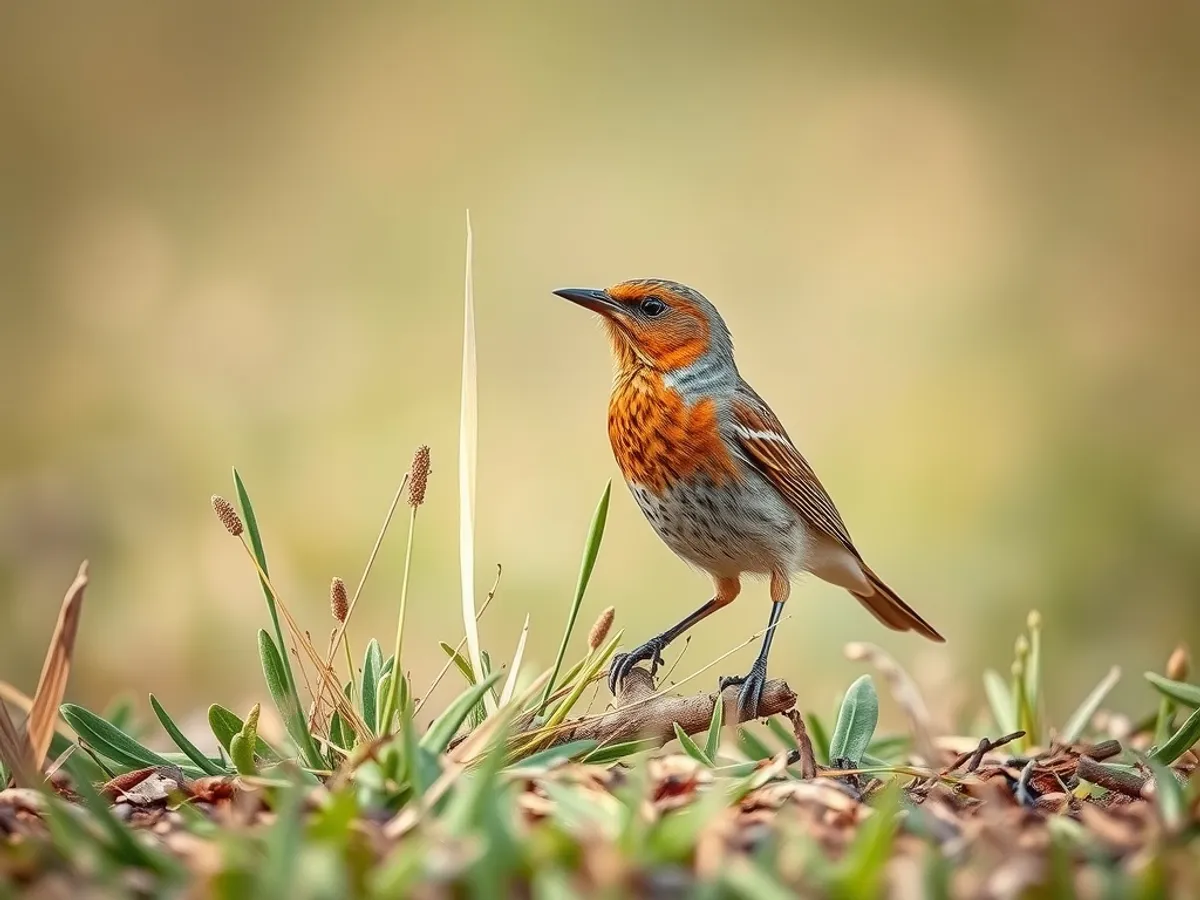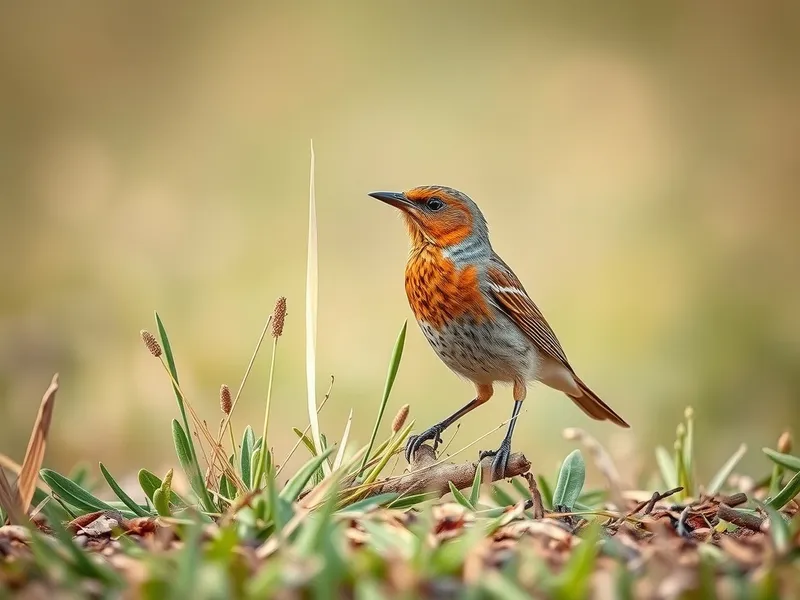
Red-billed Quelea
Quelea quelea

Meet the Red-billed Quelea
The Red-billed Quelea is a small, sparrow-sized weaver bird native to sub-Saharan Africa, recognized for its vibrant red bill and streaked brown plumage. Often called the 'feathered locust,' it is considered the most abundant wild bird species on Earth, with populations sometimes forming flocks of millions. These birds are highly gregarious, nesting in massive colonies and migrating in large groups in search of food. While visually striking, their vast numbers can devastate cereal crops, making them significant agricultural pests across their range.
Classification
Bird
Habitat
Savanna and grassland
Diet
Herbivore
Lifespan
2-3 years
Conservation
Least Concern
Weight
15-26 grams
📖Fascinating Facts
Record Numbers
The Red-billed Quelea population is estimated to exceed 1.5 billion individuals, making it the most numerous undomesticated bird species in the world.
Cereal Crop Pests
Large flocks can destroy entire fields of millet, rice, and wheat within hours, leading to their reputation as major agricultural pests in Africa.
Migratory Behavior
Red-billed Queleas migrate seasonally, sometimes traveling hundreds of kilometers to follow the rains and find fresh grass seeds.
📋Detailed Description
The Red-billed Quelea (Quelea quelea) is a small passerine bird, measuring approximately 11–13 cm in length and weighing between 15–26 grams. It exhibits pronounced sexual dimorphism during the breeding season: males develop a striking red bill and facial mask, with variable plumage patterns ranging from buff to black on the face, while females and non-breeding males display a more subdued, streaked brown appearance with a pinkish or yellowish bill. The wings are short and rounded, adapted for agile, rapid flight, and the tail is square. Red-billed Queleas are highly gregarious, forming enormous flocks that can number in the millions, especially outside the breeding season. Their social structure is complex, with individuals maintaining loose associations within dynamic flock hierarchies. They are nomadic and migratory, tracking the seasonal availability of grass seeds across savannas, grasslands, and cultivated fields. The species is renowned for its colonial nesting, with breeding colonies sometimes containing tens of thousands of nests in a single stand of thorny trees or reeds. Their vocalizations are varied, including a range of chirps and twittering calls used for flock cohesion and mating displays. The Red-billed Quelea's remarkable adaptability and reproductive output have enabled it to become the most numerous wild bird species globally, with estimates of adult populations exceeding 1.5 billion individuals during peak years.
💡 Did you know?
Despite their enormous population, Red-billed Queleas are sometimes called 'Africa's most hated bird' due to the severe damage they can inflict on crops.
🔬Research & Sources
Wikipedia Summary
The red-billed quelea, also known as the red-billed weaver or red-billed dioch, is a small—approximately 12 cm (4.7 in) long and weighing 15–26 g (0.53–0.92 oz)—migratory, sparrow-like bird of the weaver family, Ploceidae, native to Sub-Saharan Africa.
Last Modified: 5/25/2025
🎭Behavior & Social Structure
Red-billed Queleas are diurnal and spend much of their day foraging in tightly coordinated flocks, often flying in dense, swirling formations that can resemble clouds. Their primary diet consists of grass seeds, particularly from wild grasses and cereal crops such as millet, sorghum, and rice. Foraging birds use their conical bills to efficiently husk seeds, and they can strip entire fields in a matter of hours. Social interactions are highly developed; flock members engage in constant vocal communication to maintain group cohesion and coordinate movement. During the breeding season, males establish small territories within colonies and perform display flights and calls to attract females. Outside of breeding, roosting occurs communally in reed beds or trees, with tens of thousands of birds settling together at dusk. Predation risk is mitigated by flocking, as the sheer number of individuals confuses predators and reduces per capita risk. Queleas are also known for their long-distance seasonal migrations, often traveling hundreds of kilometers in response to rainfall patterns and seed availability.
👶Reproduction & Life Cycle
Breeding in Red-billed Queleas is closely synchronized with the onset of the rainy season, which triggers grass seed production. Males construct globular nests from strips of grass, typically suspended from thorny branches or reeds, and compete for female attention through nest-building prowess and display behaviors. Once a pair forms, the female lines the nest and lays 2–4 pale blue or greenish eggs. Incubation lasts approximately 10–12 days and is shared by both parents. After hatching, chicks are altricial and remain in the nest for about 10–14 days, during which both parents feed them regurgitated seeds. Fledglings become independent shortly after leaving the nest. The species is capable of multiple broods per season, especially in regions with prolonged or multiple rainy periods. Breeding colonies can be so dense that nests touch or even overlap, and the noise and activity can be deafening.
🛡️Adaptations & Survival
Red-billed Queleas exhibit several key adaptations for survival in variable and often harsh environments. Their short, robust bills are specialized for efficiently husking and consuming small, hard seeds. The species' highly synchronized breeding and nomadic movements are evolutionary responses to the unpredictable availability of food resources in the African savanna. Flocking behavior confers protection from predators and increases foraging efficiency. Rapid reproductive rates, with the potential for multiple broods per year, allow populations to recover quickly from losses and exploit temporary food bonanzas. Their ability to nest in a wide range of habitats, including thorny acacias, reeds, and even cultivated crops, further enhances their resilience. Physiologically, they can withstand periods of food scarcity by reducing metabolic rates and utilizing fat reserves.
🎨Cultural Significance
The Red-billed Quelea is often referred to as the 'feathered locust' due to its capacity for crop destruction, making it infamous among farmers across sub-Saharan Africa. In some regions, queleas are harvested for food, with millions trapped and consumed annually, particularly in West Africa. The birds are also featured in local folklore and proverbs, often symbolizing abundance, resilience, or the challenges of communal living. Their massive flocks and dramatic breeding colonies are a spectacle in the African landscape, sometimes attracting eco-tourists and birdwatchers.
🔬Recent Research & Discoveries
Recent research has focused on the genetic diversity and population structure of Red-billed Queleas, revealing significant gene flow across their vast range and supporting their classification as a single species with several subspecies. Studies on their migratory behavior have utilized satellite tracking and stable isotope analysis to map movement patterns in relation to rainfall and seed availability. Ongoing investigations address the efficacy and environmental impact of various control measures, as well as the species' potential role in ecosystem services, such as seed dispersal and serving as prey for raptors. There is also interest in the physiological mechanisms underlying their rapid reproductive cycles and ability to withstand food shortages.
🎥Wildlife Videos

Red-billed Queleas in Zakouma National Park
Red-billed Quelea flocks in Zakouma National Park in Chad.
inyathi

Red billed Quelia/Shape Shifters over the Reguik Pan in Zakouma NP in Chad
Red billed Quelia form bird highways headed for a drink and to roost for the night Murmerations.
Gunter32804

Quelea Mega-Flock Hunted by Falcon | Superswarm | BBC Earth
This mega flock has developed a system where the birds take turns drinking, to avoid being picked off by predators. Subscribe: ...
BBC Earth

Weaverbirds: Master Builders Of The Natural World
Weaverbirds are true architects of nature! Join us as we explore how these small, resourceful birds create intricate nests using ...
Birdie Learning

The Red Billed Quelea is a small bird species that is native to sub Saharan Africa
Please enjoy watching, Like, Comment, Share and Subscribe.
Elsie Duvenage

Animal Fight night: Red billed tropic bird vs frigatebirds!
Animal Movie & show clips
🌍Habitat Information
The Red-billed Quelea typically inhabits Savanna and grassland environments. Red-billed Queleas have adapted to their environments with specialized features and behaviors.
Primary Habitat:
Savanna and grassland
More detailed habitat information will be available soon.
🛡️Conservation Status
The Red-billed Quelea is currently classified as Least Concern. Conservation efforts are crucial for preserving this species for future generations.
Common Threats:
- 🏠Habitat loss and fragmentation
- 🌡️Climate change impacts
- 🎯Hunting and poaching
- 🏭Human-wildlife conflict
⚠️Threats & Conservation Challenges
Despite their abundance, Red-billed Queleas face several threats, primarily from human activities. They are considered major agricultural pests, and large-scale control measures—including aerial spraying of avicides and destruction of nesting colonies—are regularly implemented, sometimes causing significant local mortality. Habitat modification, such as conversion of grassland to agriculture, can both provide new food sources and reduce natural nesting sites. Natural predators include raptors, snakes, and mammals, but predation pressure is diluted by the sheer size of quelea flocks. Climate change, with its impact on rainfall patterns, may alter migration and breeding cycles, but the species' adaptability currently buffers it from major population declines. Overall, global populations remain extremely large and stable, and the IUCN Red List classifies the species as Least Concern.
🔬Scientific Classification
Scientific Name
Quelea quelea
Classification Hierarchy
🔍 About Taxonomic Classification
Taxonomic classification is a hierarchical system used by scientists to classify and organize living organisms based on shared characteristics and evolutionary relationships.
The system moves from broad categories (Kingdom) to increasingly specific ones, with each animal's scientific name typically consisting of its Genus and species.
📝Community Notes
Share your observations and insights about the Red-billed Quelea with our community of wildlife enthusiasts.
Join Our Community
Sign in to share your observations and connect with fellow wildlife enthusiasts.
Sign In to ContributeNo community notes yet
Be the first to share your observations about the Red-billed Quelea!
Explore Red-billed Quelea
Select a tab above to learn more about this amazing animal.
📸Photo Gallery
No photos available for this animal yet.
🌟Discover More Wildlife
Continue your journey of discovery with more fascinating animals from our database
